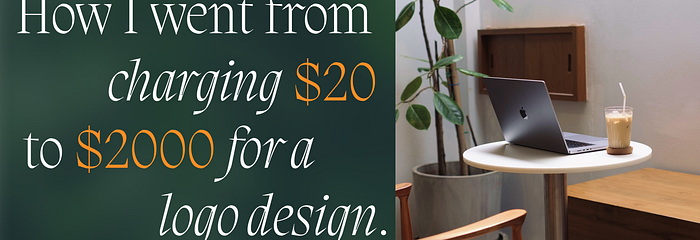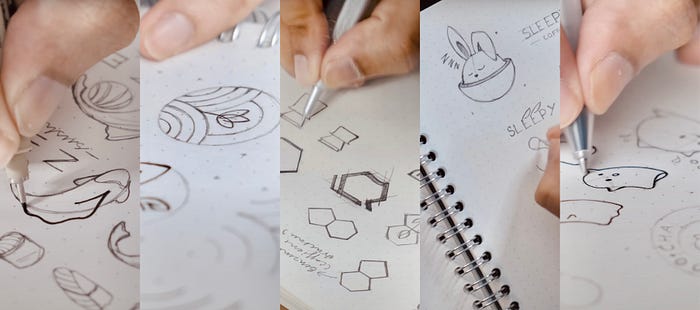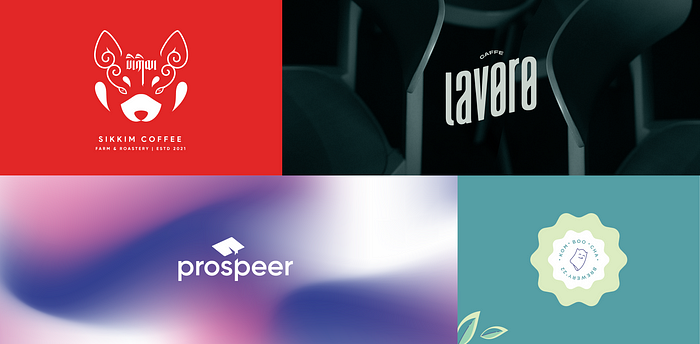

How I went from charging $20 to $2000 for a logo design.
source link: https://blog.prototypr.io/how-i-went-from-charging-20-to-2000-for-a-logo-design-88ca8beee301
Go to the source link to view the article. You can view the picture content, updated content and better typesetting reading experience. If the link is broken, please click the button below to view the snapshot at that time.

How I went from charging $20 to $2000 for a logo design.
Here’s the unfiltered truth about my journey as a freelance designer.
I remember my first freelance gig like it was yesterday. I was in my final year of college, and just like any other student, all I wanted was to earn some extra cash. That’s when I got the opportunity to get paid for doing something I loved — designing.
Fast Forward half a decade, and I am still working as a freelance designer. The only difference?
I’ve gone from charging $20 for my first gig to now commanding top-dollar rates.
But this shift didn’t happen overnight.

Sketches from past design projects.
It was a continuous process of trial and error. One that involved undervaluing my time to close the deals I wanted, to overcharging and losing potential long-term relationships.
And I wanted to share this journey with you. So stick with me till the end.
As a reluctant engineering student, graphic designing as a full-time job was always a distant dream. In 2016, concepts like the creator economy, gig economy, and freelancing weren’t as normalized as they are today. So I used to scribble reworked logos of existing brands at the back of my notebook during VLSI lectures thinking how cool it would be to do this for a living.
So when someone offered me $20 to do the same for his company, I jumped on board in less than a minute. From my internal logic, I already loved the work, so the payment I received was just gravy.
But I realized something was off when I did this for over 10 more projects.
I was putting all my efforts into the iterative creation process, yet my work wasn’t viewed through a lens of expertise. It was just viewed as a functional necessity to a business’s existence. As a result, it hampered my growth as a designer, as neither was I learning anything new nor was I given the liberty to think outside the box to develop creative solutions.
I knew something needed to change.
I should be working with brands that understand the importance of good design and would help me develop my unique style. The only problem was signing those brands as a client, as they wouldn’t work with someone with little to no work experience. At the time, I had no portfolio, or in other words, no proof of expertise, So I tried the approach of faking it till I make it.
I tried increasing my rates by a significant margin to attract these brands. The intention was to show my value and encourage a sense of mutual respect.
Why did I think this would work?
For the same reason, people often choose the most expensive option rather than the cheapest option because they believe it is more likely to be better.
There was only one problem. Premium pricing has to be backed by peerless competence. In the service-based industry, competence is measured as a function of the ROI you generate.
I hadn’t done that.

Working on my Design Studio Branding
So, safe to say increasing my pricing without optimizing my communication strategy was a half measure. One that led to absolutely no conversions.
As a graphic designer, it was difficult for me to understand the ROI of my services and how to quantify it, and more importantly, even if I can quantify it, how do I charge based on that?
I spoke to a few business owners to understand how good design affects their bottom line.
And through those conversations, I understood that there is no standardization of value creation. It’s almost like a mathematical equation with variables defined by the brand I’m working with.
So let’s say I am working for a company that is a bootstrapped startup building their MVP, and they need web design for their landing page. It’s clear that they are just starting and have minimal traffic on the page.
So for them, having a good design is a “nice to have” rather than a “must have,” If I wanted to work with such a brand, I couldn’t quote them thousands of dollars. But at the same time, if I’m working with a 7–8 figure eCommerce company that needs me to create designs to renew their packaging from me. In that case, it is reasonable to quote higher prices.
Now you might be thinking, “Shantanu, how can you charge differently to brands when the work you’re doing is the same? Isn’t this kind of unethical?”
And that’s a completely valid point.
However, at the end of the day, the deliverables might be the same, but the work behind the scenes is completely different.
When I’m working for a bootstrapped company, my only concern as a designer is creating notable experiences. Even if my work is not effective, the company’s bottom line is not affected. However, it does provide me with the opportunity to play around with different themes and truly establish a unique visual identity for the brand.
On the other hand, with the 7–8 figure E-Com brand, the logo I design will be on all of their products. As a designer, I have to consider the biases of the target demographics, understand and repurpose the imagery they are familiar with, and, most importantly, create an experience where their emotional response is concurrent with what the brand intended.
However, when you’re working with a brand of that stature, you can’t just send in a logo and call it a day. You have to explain how you came up with every aspect of the logo and show how it fits into the core identity of the business.
Designing JUST logos might not land you high-ticket clients, you have to offer a whole suite of deliverables in a packaged offer. This normally includes brand strategy, visual identity, media kits, mockups, and guidelines for having a consistent implementation of design across all platforms of communication.
As you can probably imagine, accomplishing these tasks requires much more consideration during the ideation process.
Now coming back to the equation I mentioned earlier.
The cost of my services is determined by the value I bring to the company.
More often than not, the value of my design is proportional to the number of people who would actually see it. That means the value is usually proportional to distribution.
And this became my mathematical equation for pricing my services.
Does this mean I only work with established brands with high distribution?
Absolutely not!
In certain months I work with bigger brands under predetermined constraints at premium pricing. And in the subsequent months, I spend my time working on passion projects where I get to explore my creativity and expand my horizons as a designer.

At the end of the day, I can’t give you a template for pricing your services. But what you can take from this entire blog is understanding the value you bring to the table and then charging a fair price for yourself.
Recommend
About Joyk
Aggregate valuable and interesting links.
Joyk means Joy of geeK